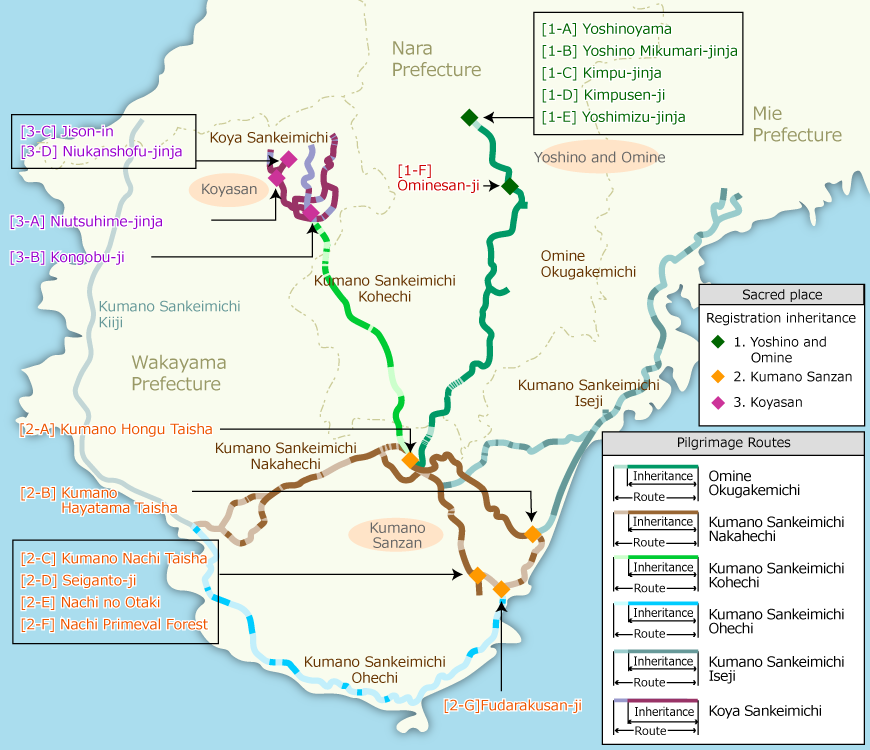Outline of the Sacred Sites and Pilgrimage Routes in the Kii Mountain Range
The Kii Mountain Range covers most of the Kii Peninsula that juts out into the Pacific Ocean. A mountain range of 1,000-2,000m runs from East to West and from North to South and over 3,000mm of annual rainfall supports deep forests.
The Kii Mountains have been thought as a sacred area where gods reside from the age of myth. In Buddhism also, these forests covered mountains are considered a Buddhist Elysium of Amida-nyorai and the Kannon-bosatsu and they were made practice stages to gain special abilities of Buddha. As a result, three sacred sites which have different origins and contents, Kumano Sanzan (Sacred Sites of Kumano), Koyasan (Sacred Sites of Koya) and Yoshino Omine (Sacred Sites of Yoshino and Omine) and pilgrimage routes to these sacred sites were formed. Many people from the capital and other places have visited there and these three sacred sites have influenced the development and cultural, religious exchange of Japan very much.
The main features of the Sacred Sites and Pilgrimage Routes in the Kii Mountain Range are the sacred sites and pilgrimage routes, and the cultural landscapes around them that could not have been formed without the nature of the Kii Mountains. Unique in Japan and rare even in the world, they are very valuable properties
Form ancient times, Kumano Sanzan, Koyasan and Yoshino-Omine have been sacred sites for Shintoism, which is based on nature worship, Buddhism, which was introduced from China and had a unique development in Japan, and Shugendo, which is a combination of Shintoism and Buddhism and developed various forms of religion. They are very unique properties, as all three Sacred Sites and Pilgrimage Routes to Kumano, Pilgrimage Routes to Koyasan, and Pilgrimage Routes of Omine Okugake are well preserved. They are also valuable in that they are very much alive in people's minds.
